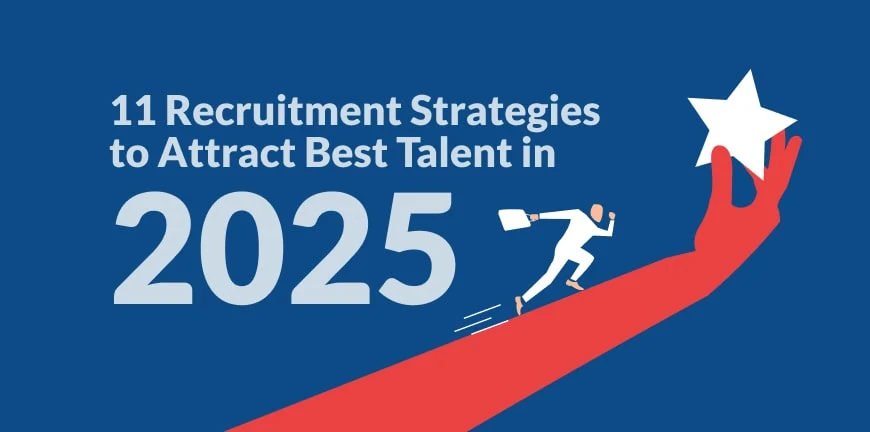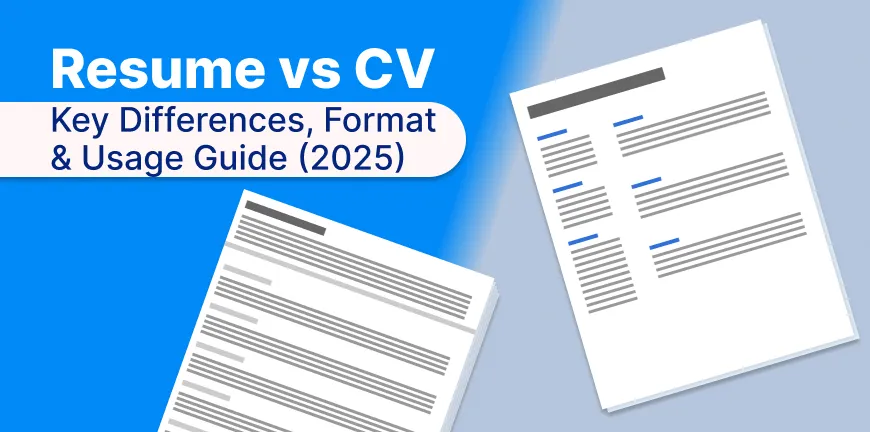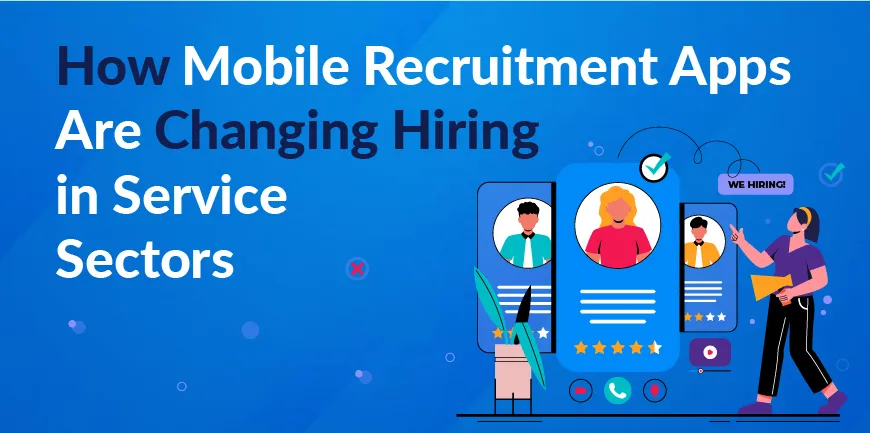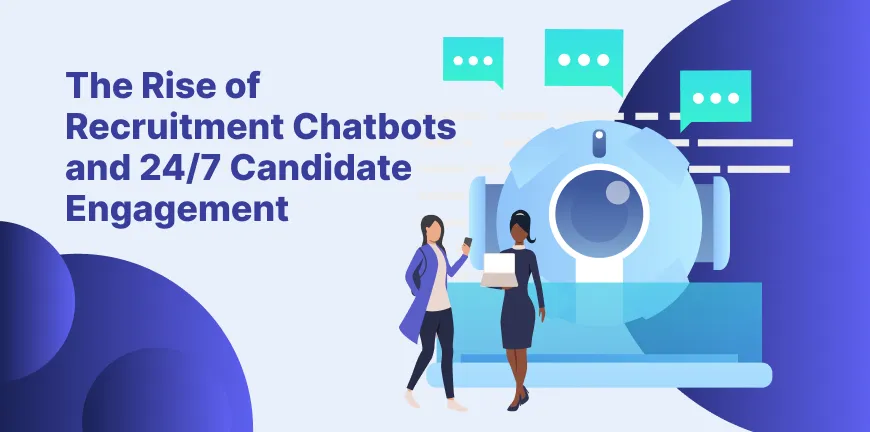
Best Career Options After Learning Japanese in 2025
29/07/2025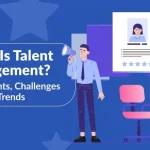
Talent Engagement: What Is It and Why Is It Important
29/07/2025“The secret of my success is that we have left no stone unturned to recruit the best of the best people in the world”- Steve Jobs (Co‑founder, Apple)
In the current business landscape, every inch of leverage matters as companies strive to maintain business continuity and stay ahead of the competition. A sound strategy is a must for running every business operation, and recruitment is no exception. As per the survey from Manpower Group, approximately 74% firms are encountering obstacles in finding the right talent at the right time.
A recruitment strategy that covers all bases from sourcing to onboarding and retention can be a game-changer for companies to attract and retain top talent across departments, resulting in business growth and brand value enhancement. Let’s discuss the 15 best recruitment strategies that HR teams can utilise to reduce bad hire rates and increase the chances of onboarding the best talent to fill regular and niche roles.
What Is a Recruitment Strategy?
A recruitment strategy definition is simple and states that ” A recruitment strategy is a detailed roadmap that outlines how to identify, assess, select, onboard, and retain prospective talent.
The recruitment strategy plan must align with organisational goals and address both current and future talent needs to prevent hustling for candidates at the last moment, which can increase the chances of bad hires. The recruitment strategies in HRM are designed based on the following factors:
- Have a detailed understanding of present & future skill gaps to create tactically sound recruitment strategies in HR that align with business goals.
- Evaluate available funds for hiring, tools, & team capacity to execute the recruitment strategy plan effectively.
- Create a USP-driven brand message and send across the digital realms to attract best-suited active & passive talents.
- Devise novel sourcing strategies in recruitment that can bring the best talents onboard in a short duration, like job portals, social media recruiting, internal & external referrals, or collaborating with top recruitment agencies like ALP Consulting, based on talent needs.
Ensure the recruitment and selection strategy & process are coupled perfectly with compliance requirements while fostering DEI initiatives throughout the recruitment lifecycle.
Why Does a Recruitment Strategy Matter in 2025?
A 360-degree focus recruitment strategy can go a long way in mitigating hiring complexities. Here are 5 reasons that shed light on the importance of recruitment strategy for meeting current and future hiring needs.
1. Alignment with Business Goals
A recruitment strategy is vital because it ensures hiring efforts are directed towards organisational growth plans, workforce planning, & long‑term vision rather than random, uncoordinated recruitment activities.
2. Structured Hiring Process
A recruiting pipeline strategy establishes a defined process, helping hiring managers and HR teams follow consistent steps. This approach reduces confusion and ensures all recruitment activities meet pre‑set standards & expectations.
3. Resource Optimisation
The best practice recruitment strategies are important to allocate time, budget, and tools wisely. These recruitment strategies in HR prevent overspending, duplicated efforts, & inefficient use of human resources during large‑scale or ongoing hiring campaigns.
4. Market Responsiveness
A proven recruitment and selection strategy empowers companies to deploy countermeasures in real-time to labour market trends, skill gaps, or sudden hiring needs.
5. Compliance & Risk Management
The latest recruitment strategies are imperative as they ingrain legal, ethical, & diversity considerations within the DNA of the hiring process. These well-churned-out recruitment strategies in HR minimise risks of non‑compliance, discrimination issues, or reputational damage in competitive markets.
What Are the 15 Most Effective Recruitment Strategies for 2025?
Here are the 15 best recruitment strategies that a company’s HR team can adopt to hire top talent in 2025:
1. Streamline JD (Job Description)
Most job seekers look for a JD that provides precise details with clearly described terms and conditions for clicking on the apply button. A solid recruitment strategy must include a well-crafted JD that accurately describes job roles and responsibilities in detail, CTC offered, devoid of jargon & clichés, reporting authority, skills required, experience, designation, and many more. A well-laid-out JD can win over the candidate’s trust and help companies create a positive start in the recruitment journey.
2. Explore creative candidate sourcing methods
Sourcing strategies in recruitment play a protagonist role in scouting top talent across domains. However, relying on a single sourcing method like job portals can only bring a particular section of candidates into contention and will not cover the entire pool of talent that can be tapped across India.
Additionally, some sourcing methods work well only for finding passive talents rather than meeting urgent and specific needs. The best recruitment strategies for sourcing involve approaches that target both active & passive talent.
Combine multiple creative sourcing strategies in recruitment that bring fresh perspectives, such as listing the JD in reputed job portals, using the company website effectively to post requirements, social media recruiting, internal referral programs, campus hiring, collaborating with top sourcing agencies like ALP Consulting, etc.
3. Improve Employer Branding
Employer branding is an indirect recruitment strategy that is key to attracting skilled and career-focused talent to fill workforce gaps and maintain business continuity. Some of the proven methods to improve employer branding include:
- Provide a phenomenal candidate experience.
- Maintain consistent social media engagement.
- Deploy career growth and training initiatives.
- Follow ethical practices and lead by example.
4. Run a Competitive Salary Package Analysis
Low compensation is one of the most common reasons given by candidates for rejecting a job offer. The low offer might be due to several reasons, like a lack of understanding from the decision makers about the importance of the role offered, competitors are offering better compensation for the same role, not up to date with current compensation trends, and many more.
Compensation analysis of competitors is one of the most trending new recruitment strategies that companies are using to design the best compensation and benefit packages to attract and retain top talent in 2025.
5. Use “Must Have” Requirements Sparingly
Having too many “must-have” requirements in a job description can create bottlenecks for scouting top talent. Some potential candidates may not have the exact skills required as per the JD, but have a different skill set that can be used as an alternative.
Also, if a candidate meets 90% of the skill requirements, then the rest of the 10% can be fulfilled through internal training. The understanding of such nuances can improve recruitment strategies and help companies build a wide pool of talent ready to be recruited at any moment.
6. Streamline the Onboarding Process
It is paramount for companies to make newly selected candidates feel welcome and part of the organisation from the get-go. Research says that the candidate’s mindset towards the company will move in a positive direction with a top-notch onboarding experience, resulting in better productivity, proactive participation in all company endeavours, and a longer stay. HR teams must design a robust onboarding process to help newly joined companies seamlessly transition into their new job role and enjoy their stay.
7. Track Key Recruitment Metrics
To get a clear picture of whether a particular recruitment strategy is working effectively is through tracking the key recruitment metrics. The HR teams must keep a close tab on the different metrics like time to hire, cost per hire, offer acceptance rates, candidate experience, source of hire, and retention rates to make informed decisions and revise recruitment strategies to get better outcomes in the next hiring cycle.
8. Implement a Lucrative Employee Referral Program
Sometimes, the best sourcing strategies in recruitment lie within the company. Existing employees can bring quality hires as they already have a clear idea of which type of talent can bring the best results for the company.
The HR team must develop and lucrative employee referral program that motivates the workforce to put more effort into leveraging their network and bring top talent onboard and earn substantial rewards, creating a win-win situation for both employees and the firm.
9. Improve the Careers Page on the Official Website
Most companies don’t optimise their careers page, losing out on a smart sourcing channel that doesn’t require heavy investment to fetch great results. Involve the digital marketing team and optimise the career page with relevant content such as how to apply for jobs, available positions, candidate testimonials, the company’s employee benefits, etc.
Also, ensure these pages appear in the search results of popular search engines like Google, Bing, etc.
10. Don’t Delay in Sending the Job Offer
Candidates will be attending multiple interviews at the same time, as they want to increase their chances of landing a lucrative salary package. The HR teams must make proactive decisions and send the job offer immediately without too much delay, so that the candidates can believe that the company is very much interested in hiring them and initiate negotiations & accept the job offer.
11. Keep Ongoing Engagement with Passive Candidates
Nearly 70% the global workforce is filled with passive candidates. A smart approach for the HR team to get top talent on board in a short duration is to keep ongoing engagement with passive candidates, and once they are ready to switch, make the move and arrange an interview. Creating a wide passive talent pool can provide a key advantage for companies to fill diverse roles at once.
12. Host Virtual Recruitment Events and Webinars
In today’s remote and hybrid-dominated work mode, virtual recruitment events & webinars offer a unique way to demonstrate company culture & available roles. This Genz recruitment strategy enables real-time interaction with potential candidates, clarifies job expectations, & attracts passive talent who are exploring opportunities without actively applying, resulting in a more engaged talent pool.
13. Adopt AI-Powered Resume Screening Tools
Manual resume screening can be tedious & prone to bias. In 2025, companies must invest in AI-powered screening tools such as ATS resume checkers that analyse resumes via keyword matching, skill scoring, & behavioural pattern prediction. These tools not only minimise the time-to-hire but also ensure a more accurate & fair shortlisting process for HR teams.
14. Incorporate Skills Assessment Tools Early
To avoid hiring mismatches, introducing skill assessments right after candidate sourcing can be a smart approach right from the outset. Utilise online platforms to evaluate & decipher technical, cognitive, or domain-specific skills. This recruitment strategy plan empowers HR teams to filter out unsuitable applicants early. This ensures only job-ready candidates move forward in the interview process, thereby saving time & resources.
15. Embrace Diversity-Focused Hiring Strategies
Candidates in the current day & age favour companies with strong diversity, equity, & inclusion (DEI) values. Create inclusive job postings, use blind resume reviews, & deploy diverse interview panels. A diversity-first recruitment strategy helps churn out a more innovative, empathetic, & globally relevant workforce while also enhancing employer branding among future talent.
What Services Are Included in a Modern Recruitment Strategy?
The key services included in a modern recruitment strategy include:
1. Talent Sourcing and Mapping
This service involves engaging in different recruitment strategies for identifying, researching, & proactively scouting potential candidates. Some of the techniques preferred for talent sourcing & mapping include job portals, digital media platforms, internal referrals, etc.
2. Employer Branding Initiatives
Modern recruitment strategies in HR encompass crafting & promoting a strong employer brand via online tools like digital campaigns, dedicated career pages, testimonials, & engagement programs that epitomise culture, values, & career boosting opportunities to attract top talent.
3. Applicant Tracking and Screening
A recruitment and selection strategy run via advanced applicant tracking systems (ATS) will help recruiters manage applications, automate resume screening, assess qualifications, &shortlist candidates efficiently. This move ensures only suitable profiles move to the next stage in the hiring process.
4. Recruitment Marketing Campaigns
Targeted digital marketing campaigns, email outreach, & social media ads are executed to position job openings effectively. These latest recruitment strategies help reach passive and active candidates while enhancing overall visibility in competitive markets.
5. Data‑Driven Analytics and Reporting
Comprehensive reporting & analytics track hiring metrics, candidate quality, sourcing effectiveness, and time‑to‑hire. These latest reporting methodologies enable continuous improvement and informed decision‑making throughout the recruitment lifecycle in modern organisations.
Key Takeaways
- Strategic recruitment aligns hiring efforts with long‑term business goals.
- Creative sourcing methods expand access to diverse global talent pools.
- Employer branding initiatives attract skilled candidates and build trust.
- Data‑driven analytics refine hiring processes and improve decision-making.
- AI‑enabled recruitment accelerates screening, matching, and candidate engagement.
Frequently Asked Questions (FAQs)
1. What is a recruitment strategy?
A recruitment strategy is a structured plan guiding how organisations attract, source, assess, & hire top talent across domains aligned with business objectives.
2. Which recruitment strategy is most effective in 2025?
Data‑driven, AI‑enabled recruitment, combining employer branding, predictive analytics, and diverse sourcing channels, is considered the most effective recruitment strategy plan in 2025’s dynamic market.
3. How does AI improve recruiting results?
AI enhances candidate matching, automates screening, reduces hiring time, predicts success, and improves decision‑making through data‑driven insights and analytics.
4. What is a Recruitment Strategy plan?
A recruitment strategy plan details hiring goals, sourcing methods, timelines, budgets, and evaluation metrics to ensure consistent, efficient, and scalable recruitment.
5. What are the Recruitment Strategies in HR?
Recruitment strategies in HR include employer branding, talent pipelines, campus hiring, employee referrals, social recruitment, diversity initiatives, and data‑driven sourcing to strengthen hiring.
6. What are the Recruitment Strategy Examples?
Recruitment strategy examples include internal mobility programs, social media campaigns, recruitment process outsourcing, hackathon hiring, and AI‑powered candidate screening initiatives.
7. What are the New Recruitment Strategy Trends?
The current trends in new recruitment strategies include hyper-personalised candidate engagement, AI chatbots, virtual reality assessments, remote hiring, and skill‑based hiring models shaping modern recruitment.
8. How to build a strong recruitment strategy pipeline?
The strong recruiting pipeline strategy encompasses continuously sourcing talent, maintaining relationships, using talent pools, aligning skills with needs, and monitoring progress through advanced tracking systems.
9. What are the best practice recruitment strategies?
Clear role definitions, strong employer branding, structured interviews, data‑backed decisions, proactive sourcing, and inclusive policies represent best practice recruitment strategies.
10. What are the types of recruitment strategies?
The different types of recruitment strategies include internal recruitment, external recruitment, campus hiring, headhunting, employee referrals, digital sourcing, & employer brand‑focused recruitment campaigns.

